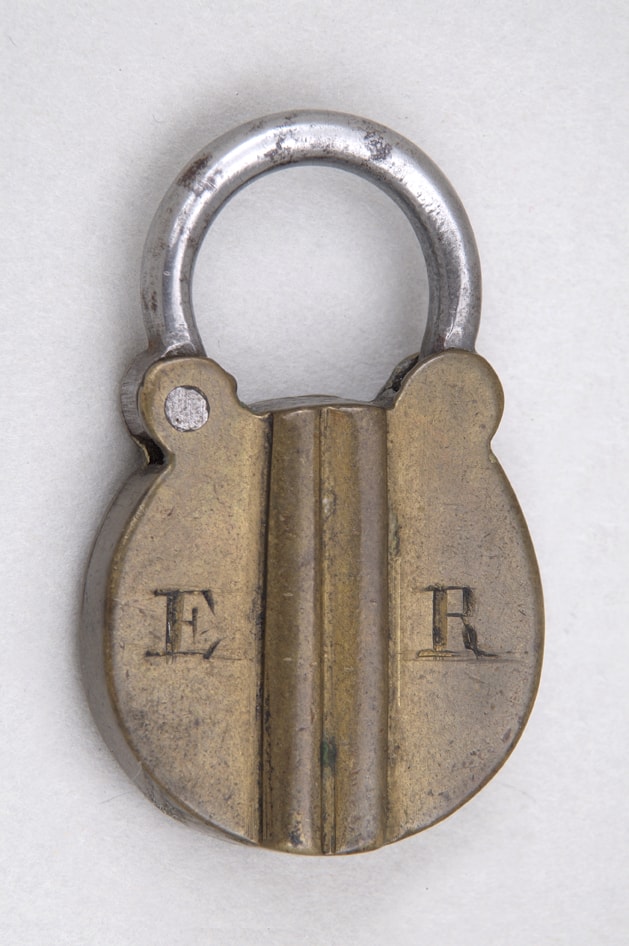About the object
Reunited
This padlock engraved with the initials ER is almost certainly the one described on the billet, or paper record, of Elizabeth Revers. She was brought to the Hospital in 1756. A note also left with her tells us that Elizabeth came from Hog Lane, in the parish of St George in the Fields, London. Babies in the care of the Hospital were sent out of London for the first few years of their lives to be cared for by paid wet nurses. Elizabeth went to Yateley in Hampshire, returning in 1761. She was one of the handful of foundling children who were eventually reunited with their families. In 1763, when she was around seven years old, she was claimed by her mother, Ann Lombard. Ann was married to Daniel Lombard, a watchmaker of Tottenham Court Road. We don’t know if Daniel was the child’s father, or whether he took Elizabeth into his own family at his wife’s request.
Unbreakable bonds
This is one of three surviving padlocks left as tokens with children at the Foundling Hospital. A person leaving a padlock could keep the key as an additional way to prove their identity when they returned to claim their child. The choice of these objects also has strong symbolic power: the unique connection between parent and child like a lock and its key, or a wish for a safe and secure future. Padlocks are still symbolic. Today, lovers will attach padlocks – sometimes with their names or initials inscribed on them – to bridges and railings. By throwing away the key they proclaim their unbreakable connection.
